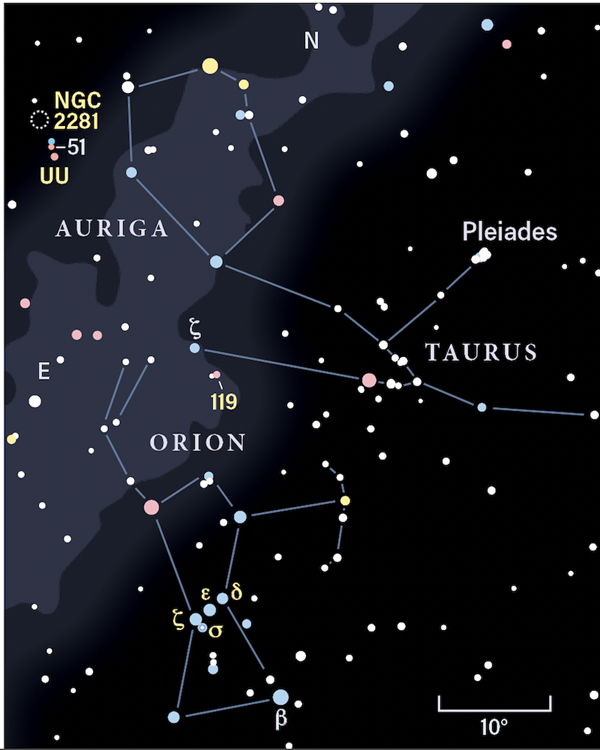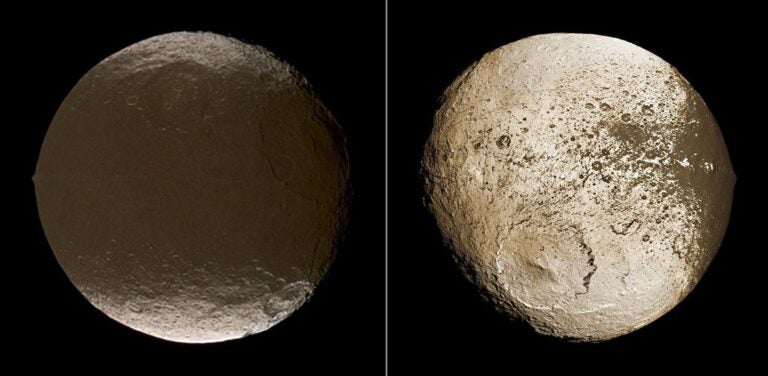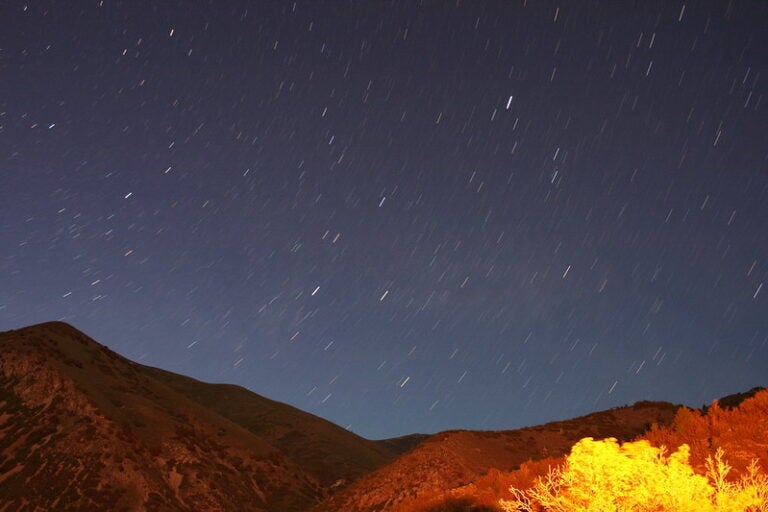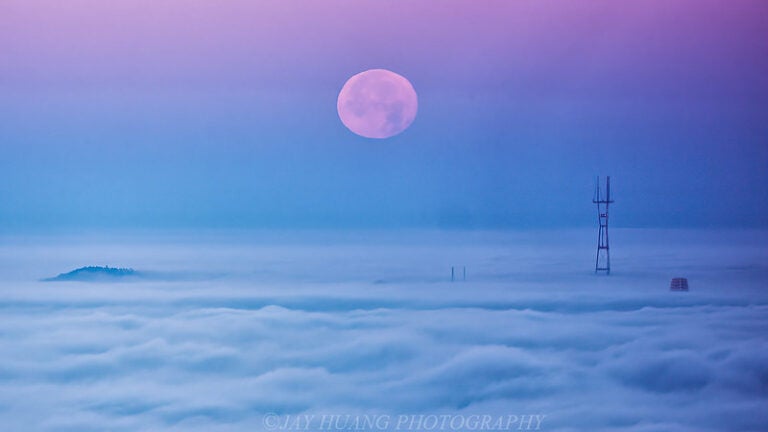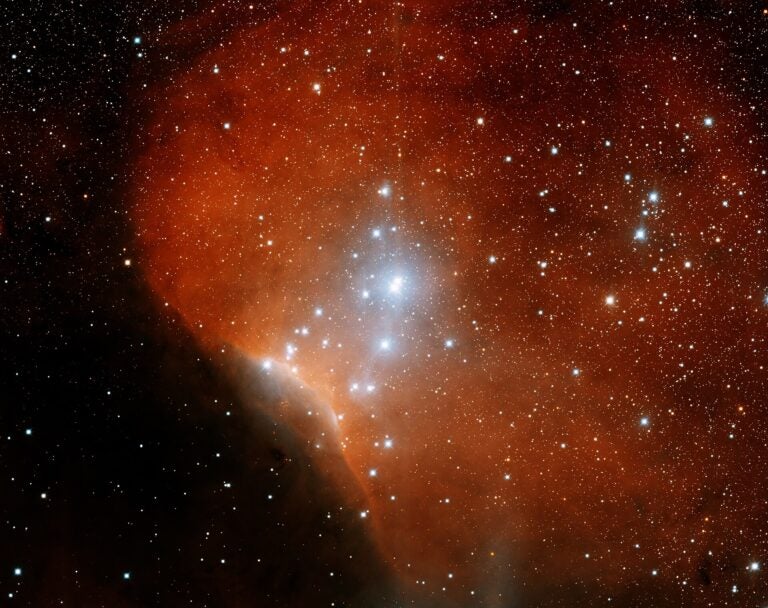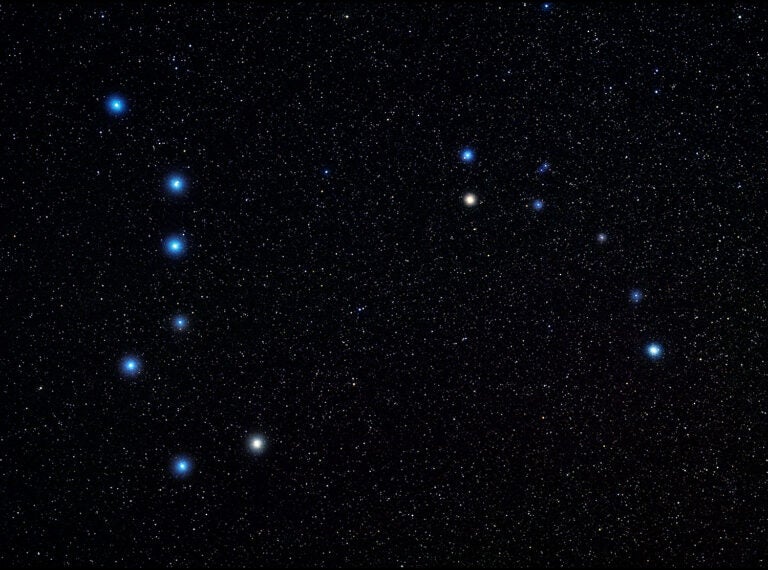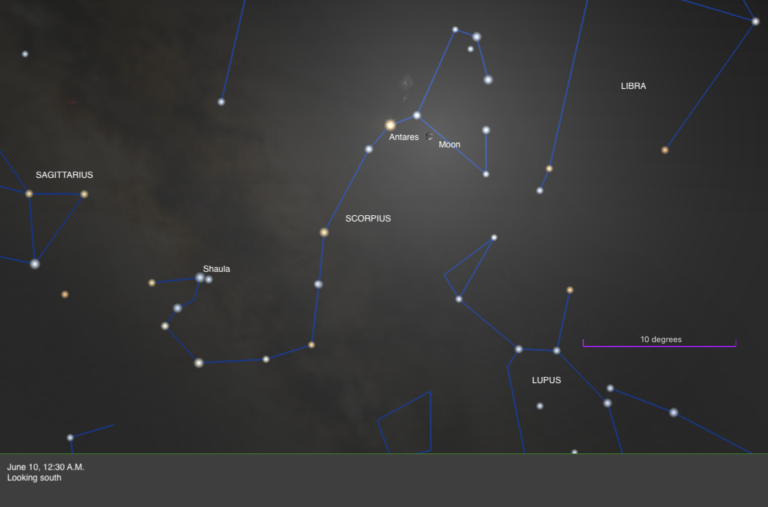Usually at this time of year, many of us are greeted with leafless trees, barren gardens, and snow-laden landscapes. But while much of the daytime views may be starved for color, the night sky is resplendent with vibrant stars for observers. I offered some favorites back in my January 2020 column, and this month, we are back in search of more winter color.
But how is it that astronomers measure a star’s color? Citing it purely in words can be subjective. So, to quantify a star’s color, researchers measure its magnitude at three wavelengths: ultraviolet (abbreviated UV), blue (B), and yellow (V, for visual). The difference between the measured B and V magnitudes, called the B-V color index, is the best way to gauge a star’s true color. The smaller the value, the bluer the star. The bluest stars can range down to −0.4, while the reddest exceed 2.0. Our Sun, a yellow main sequence star, has a B-V color index of 0.66.
To better appreciate star colors through binoculars, try slightly defocusing the field. Doing so diffuses starlight just enough for our eyes to detect subtle colors that pass unnoticed when in focus. I need no more than an eighth of a turn to make a difference.
The three stars that make up Orion’s Belt are some of the bluest stars in the winter sky. From west to east, those are Mintaka (Delta [δ] Orionis), Alnilam (Epsilon [ε] Orionis), and Alnitak (Zeta [ζ] Orionis). With B-V color indices of –0.39, –0.18 and –0.21, respectively, all three look like glittering sapphires against a backdrop of celestial diamond dust. Mintaka, at the northwest (upper right) end of the Belt, is obviously the bluest. Compare all three to blue-white Rigel (Beta [β] Orionis), which has a B-V value of –0.03.
As you marvel at Orion’s Belt, glance just 50′ southwest of Alnitak to Sigma (σ) Orionis. With a B-V index of −0.21, Sigma is another one of winter’s bluest stars visible with binoculars. As a bonus, if you have 12x or higher power binoculars, look carefully and you may notice that Sigma has a 7th-magnitude blue-white companion star just 40″ northeast. Sigma is a quintuple star system through telescopes — and in fact the brightest object, Sigma Orionis AB, is actually three stars, but it is impossible to split them with a scope. The component visible through most binoculars is known as Sigma Orionis E.
Let’s jump to the opposite end of the visible spectrum and hunt for some orange and red stars. Aim at blue Zeta (ζ) Tauri, the Bull’s southern horn, and glance about half a field southwest. There, 4th-magnitude 119 Tauri smolders like an orange ember. You would never know it from its modest brightness, but 119 Tauri is a red supergiant like Betelgeuse. In fact, its B-V color index of 2.08 makes it even redder than that well-known star. But at a distance three times greater, 119 Tauri receives little attention. Show it some love on the next clear night.
With a B-V color index of 2.64, UU Aurigae is just about winter’s reddest star visible through binoculars. It varies between 5th and 7th magnitudes but is typically around 6th. You’ll find it about 7.5° east of Theta (θ) Aurigae, along the pentagonal constellation’s eastern side. Once there, compare its color to that of 51 Aurigae, found one degree north-northeast. Although they appear similarly bright, 51 will appear as more yellow, compared to its ruddy neighbor.
Finally, glance about 5° north of UU Aur to find a right triangle made up of three pale yellow 5th-magnitude stars. Psi2 (ψ2) lies at the right angle, Psi4 (ψ4) marks the triangle’s northern vertex, and Psi7 (ψ7) the southeastern vertex. While surveying the stars for this column early one morning last fall, I unexpectedly noticed a small, fuzzy patch of light adjacent to Psi7. Glancing at my chart, I discovered it was NGC 2281, an open cluster containing about 30 stars. The sky was clear enough that I was able to resolve a few of the cluster’s brightest members against the faint glow through my 10x50s.
I’d enjoy hearing if you uncover other colorful stars or any unexpected sights. Contact me through my website, philharrington.net. Until next month, remember that two eyes are better than one.

